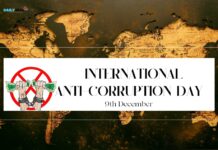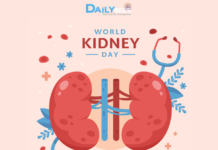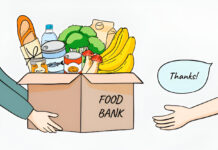Like an elegant flower bouquet made by arranging different flowers, or a scenic painting created by blending multiple colors, our beautiful Earth is a creation of God with diverse and stunning landforms. These landforms, such as breathtaking mountains, glaciers, valleys, deserts, plateaus, and loess, possess their own natural beauty and utility.
However, a shocking incident occurred that damaged the beautiful arrangement of landforms on our Earth. Parts of the Great Plains in the United States turned into a ‘Dust Bowl,’ forcing millions of people to abandon their farms and livelihoods. In 1968, a drought began in the Sahel region of West Africa, exacerbated by unsustainable land use practices, resulting in the deaths of millions of people and 12 million cattle, as well as the disruption of social organizations from villages to the national level. This led to the United Nations Conference on Desertification in Nairobi in 1977, where desertification as a social and environmental problem was recognized. In 1992, during the Rio Earth Summit, desertification, along with climate change and loss of biodiversity, was identified as one of the greatest challenges to sustainable development. Two years later, in 1994, the General Assembly established the United Nations Convention to Combat Desertification (UNCCD), the sole legally binding international agreement linking environment and development to sustainable land use management, and declared 17 June as “World Day to Combat Desertification and Drought.”
This year’s theme is “Her Land. Her Rights.,” emphasizing women’s land ownership rights. Women, when given ownership rights, are better able to provide for their families, secure their livelihoods, invest in communities, and achieve improved health, educational, and economic outcomes. They are also more likely to engage in sustainable land use practices that conserve biodiversity and ecosystems on the land under their control.
Globally, under the UNCCD, 24% of land is degrading. The loss in agricultural production due to desertification is estimated to be 2.5% of India’s GDP.
*What is Drought and Desertification?*
Drought: A period of abnormally dry weather that is prolonged enough to cause a serious water imbalance in the affected area.
Desertification: The degradation process in which fertile land changes into a desert-like environment, losing its flora, fauna, and productivity due to natural or anthropogenic factors. Extreme drought conditions can result in desertification.
*Causes of Desertification:*
Human interference in nature, such as:
1. Deforestation
2. Mining
3. Soil pollution: Discharge of untreated wastewater from industries containing heavy metals, which kills useful microbes in fertile soil.
4. Overdrafting of groundwater
5. Unsustainable land use practices in agriculture: Intensive use of chemical fertilizers that increase soil salinity.
6. Climate change causing land degradation: Extreme weather conditions like drought caused by increased greenhouse gas emissions and natural calamities.
7. Overgrazing
8. Overpopulation: Overuse of resources.
9. Urbanization: Increase in concrete reduces the amount of organic matter in soil and directly affects its fertility and productivity.
*Impact of Drought and Desertification:*
1. Biodiversity: Extinction of species and loss of biodiversity.
2. Crops: Crop failure and reduced yield. Water scarcity in drylands limits the production of wood, crops, and forage.
3. Soil or Land: Soil infertility, soil erosion, and land degradation.
4. Human Life: Food insecurity and hunger, flooding, water pollution, adverse economic effects, and migration.
*Solutions to Desertification:*
1. Policy Changes related to farming and agriculture:
– Controlled use of chemical fertilizers.
– Reduction of water-intensive
crops on arable land.
– Adoption of sustainable agriculture practices like organic farming.
– Soil treatment, e.g., addressing soil salinity.
– Zero tillage to reduce soil erosion.
2. Policy Changes to other Land use patterns:
– Limiting urbanization by providing economic opportunities in rural areas.
– Water conservation and management.
– Control of intensive land use practices.
– Encouraging fallow land use to reduce pressure on small plots of land.
3. Education and awareness:
– Promoting sustainable land use practices.
– Educating about sustainable agriculture and other practices.
4. Advanced Technology Use:
– Increased research and development.
– Application of latest technology in farming and other sectors to prevent desertification, such as using drip irrigation instead of intensive irrigation to control soil salinity and prevent land degradation.
5. Restricting Mining activities.
6. Rehabilitation Efforts:
– Rehabilitating already desertified land with investment of time and resources.
7. Miscellaneous:
– Reforestation
– National and international protocols to combat desertification.
We must take timely action to save our beautiful Mother Earth, its creatures, and human existence, which are all becoming victims of desertification. We must avoid human activities that contribute to its enhancement. If we don’t act now, it may be too late. Let’s not let our future dry up; it’s time to take action.




































